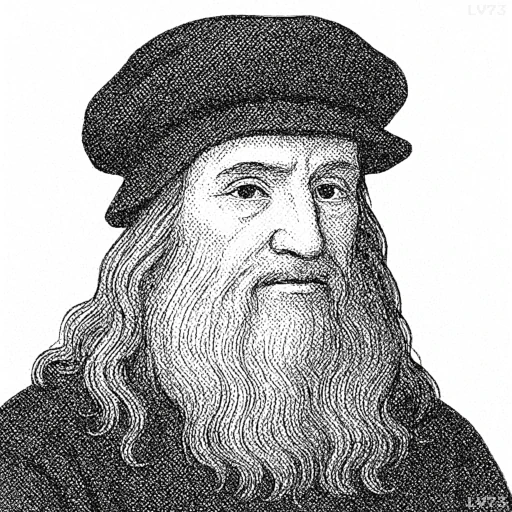“The beginnings and ends of shadow lie between the light and darkness and may be infinitely diminished and infinitely increased. Shadow is the means by which bodies display their form. The forms of bodies could not be understood in detail but for shadow.”

- April 15, 1452 – May 2, 1519
- Italian
- A versatile man (painter, sculptor, architect, inventor, scientist, etc.)
table of contents
Quote
“The beginnings and ends of shadow lie between the light and darkness and may be infinitely diminished and infinitely increased. Shadow is the means by which bodies display their form. The forms of bodies could not be understood in detail but for shadow.”
Explanation
In this quote, Leonardo da Vinci explores the essential role that shadow plays in understanding the form and structure of objects. Da Vinci observes that shadow exists between light and darkness, and its presence can be infinitely altered, depending on the amount and angle of light. Shadow, in his view, is not just a mere absence of light; it is a vital element that helps to define and reveal the shapes of objects. Without shadow, the three-dimensionality and intricate details of a body would be difficult to perceive. Shadow, then, is the key to perceiving the true form of things, giving them depth, contrast, and clarity.
Historically, Da Vinci was deeply interested in light and shadow, studying them both in relation to art and anatomy. In his paintings, such as the Mona Lisa, he employed the technique of sfumato—the subtle gradation of light and shadow—to create depth and realism. Da Vinci understood that shadow was not just a decorative element but a critical tool for understanding form. His exploration of light and shadow laid the groundwork for later developments in perspective and realism in art.
In modern times, this quote holds significance in both the arts and sciences. In art, shadow is used to create depth, texture, and realism, giving form to two-dimensional works. In photography and cinematography, light and shadow are used to convey mood, shape, and narrative. Additionally, in scientific fields, the study of shadow and light plays a critical role in understanding things like geometry, optics, and visual perception. Da Vinci’s insight reminds us that shadow is not simply the absence of light but a fundamental element that enhances our understanding of the physical world, revealing the subtle details that would otherwise remain hidden.
Would you like to share your impressions or related stories about this quote in the comments section?




